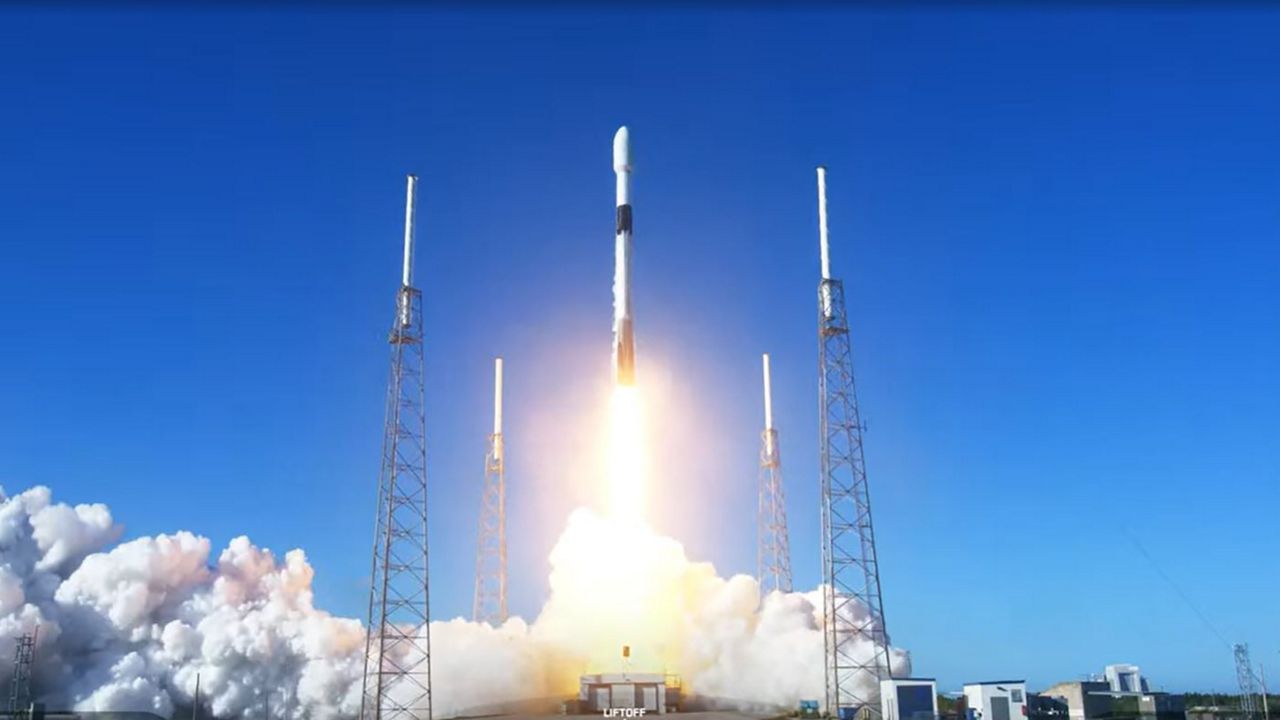CAPE CANAVERAL SPACE FORCE — While the weather was a concern, conditions improved that allowed SpaceX to launch more than 20 Starlink satellites Sunday morning.
What You Need To Know
- Twenty two second-generation Starlink satellites went up
- 🔻Scroll down to watch the launch🔻
Liftoff! pic.twitter.com/FVL8j6vvu1
— SpaceX (@SpaceX) June 4, 2023
Launching from Space Launch Complex 40 at Cape Canaveral Space Force Station, the company’s Falcon 9 rocket sent 22 second-generation Starlink satellites to low-Earth orbit.
The launch happened at 8:20 a.m. ET.
And the weather was a concern.
On Saturday, the 45th Weather Squadron gave a 50% chance of good liftoff weather for Sunday’s launch, with the only concerns being cumulus cloud and surface electric fields rules.
Early Sunday morning, SpaceX tweeted that the weather conditions dropped to about 15% favorable, but later tweeted the conditions improved to 90%, but upper-level winds were a concern.
Launch site weather conditions have improved to 90% favorable for liftoff but teams are keeping an eye on upper level winds.
— SpaceX (@SpaceX) June 4, 2023
A live webcast of this mission will begin about five minutes prior to liftoff → https://t.co/iDvX2RpgLx
If the launch did not happen on Sunday, the next attempt would have been Monday, June 5, at 5:44 a.m. with backup times being: 6:23 a.m. ET and 8:04 a.m. ET.
This will be first-stage booster B1078’s third mission, with two successful missions:
After the stage separation, the rocket's first stage landed on Just Read the Instructions, in which the droneship is in the Atlantic Ocean.
Falcon 9’s first stage has landed on the Just Read the Instructions droneship pic.twitter.com/bg6OerL9IG
— SpaceX (@SpaceX) June 4, 2023
Since the launch did happen, it may be a rare double launch day for SpaceX and the Space Coast. Later on Sunday, SpaceX will be launching a resupply mission to the International Space Station.
About the mission
The Starlink 6-4 mission sent 22 Starlink satellites into space, joining the thousands already in orbit.
The satellites provide internet service to many parts of the globe. The Starlink company is owned by SpaceX.
Before Sunday morning’s launch, astronomer Jonathan McDowell of Harvard-Smithsonian Center for Astrophysics recorded the current information on the Starlink satellites: 4,198 are in orbit, with 4,162 in working order and 3,542 actively operating.




